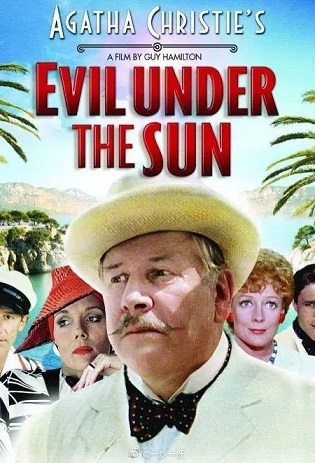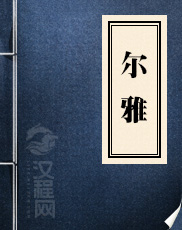In a few minutes the three hunters were before a crackling fire. The captain and the reporter were there. Pencroft looked from one to the other, his capybara in his hand, without saying a word.
"Well, yes, my brave fellow," cried the reporter.
"Fire, real fire, which will roast this splendid pig perfectly1, and we will have a feast presently!"
"But who lighted it?" asked Pencroft.
"The sun!"
Gideon Spilett was quite right in his reply. It was the sun which had furnished the heat which so astonished Pencroft. The sailor could scarcely believe his eyes, and he was so amazed that he did not think of questioning the engineer.
"Had you a burning-glass, sir?" asked Herbert of Harding.
"No, my boy," replied he, "but I made one."
And he showed the apparatus2 which served for a burning-glass. It was simply two glasses which he had taken from his own and the reporter's watches. Having filled them with water and rendered their edges adhesive3 by means of a little clay, he thus fabricated a regular burning-glass, which, concentrating the solar rays on some very dry moss4, soon caused it to blaze.
The sailor considered the apparatus; then he gazed at the engineer without saying a word, only a look plainly expressed his opinion that if Cyrus Harding was not a magician, he was certainly no ordinary man. At last speech returned to him, and he cried,--
"Note that, Mr. Spilett, note that down on your paper!"
"It is noted," replied the reporter.
Then, Neb helping5 him, the seaman6 arranged the spit, and the capybara, properly cleaned, was soon roasting like a suckling-pig before a clear, crackling fire.
The Chimneys had again become more habitable, not only because the passages were warmed by the fire, but because the partitions of wood and mud had been re-established.
It was evident that the engineer and his companions had employed their day well. Cyrus Harding had almost entirely7 recovered his strength, and had proved it by climbing to the upper plateau. From this point his eye, accustomed to estimate heights and distances, was fixed8 for a long time on the cone9, the summit of which he wished to reach the next day. The mountain, situated10 about six miles to the northwest, appeared to him to measure 3,500 feet above the level of the sea. Consequently the gaze of an observer posted on its summit would extend over a radius11 of at least fifty miles. Therefore it was probable that Harding could easily solve the question of "island or continent," to which he attached so much importance.
They supped capitally. The flesh of the capybara was declared excellent. The sargassum and the almonds of the stone-pine completed the repast, during which the engineer spoke12 little. He was preoccupied13 with projects for the next day.
Once or twice Pencroft gave forth14 some ideas upon what it would be best to do; but Cyrus Harding, who was evidently of a methodical mind, only shook his head without uttering a word.
"To-morrow," he repeated, "we shall know what we have to depend upon, and we will act accordingly."
The meal ended, fresh armfuls of wood were thrown on the fire, and the inhabitants of the Chimneys, including the faithful Top, were soon buried in a deep sleep.
No incident disturbed this peaceful night, and the next day, the 29th of March, fresh and active they awoke, ready to undertake the excursion which must determine their fate.
All was ready for the start. The remains15 of the capybara would be enough to sustain Harding and his companions for at least twenty-four hours.
Besides, they hoped to find more food on the way. As the glasses had been returned to the watches of the engineer and reporter, Pencroft burned a little linen16 to serve as tinder. As to flint, that would not be wanting in these regions of Plutonic origin. It was half-past seven in the morning when the explorers, armed with sticks, left the Chimneys. Following Pencroft's advice, it appeared best to take the road already traversed through the forest, and to return by another route. It was also the most direct way to reach the mountain. They turned the south angle and followed the left bank of the river, which was abandoned at the point where it formed an elbow towards the southwest. The path, already trodden under the evergreen17 trees, was found, and at nine o'clock Cyrus Harding and his companions had reached the western border of the forest. The ground, till then, very little undulated, boggy18 at first, dry and sandy afterwards, had a gentle slope, which ascended19 from the shore towards the interior of the country. A few very timid animals were seen under the forest-trees. Top quickly started them, but his master soon called him back, for the time had not come to commence hunting; that would be attended to later. The engineer was not a man who would allow himself to be diverted from his fixed idea. It might even have been said that he did not observe the country at all, either in its configuration21 or in its natural productions, his great aim being to climb the mountain before him, and therefore straight towards it he went. At ten o'clock a halt of a few minutes was made. On leaving the forest, the mountain system of the country appeared before the explorers. The mountain was composed of two cones22; the first, truncated23 at a height of about two thousand five hundred feet, was sustained by buttresses24, which appeared to branch out like the talons25 of an immense claw set on the ground. Between these were narrow valleys, bristling26 with trees, the last clumps27 of which rose to the top of the lowest cone. There appeared to be less vegetation on that side of the mountain which was exposed to the northeast, and deep fissures28 could be seen which, no doubt, were watercourses.
On the first cone rested a second, slightly rounded, and placed a little on one side, like a great round hat cocked over the ear. A Scotchman would have said, "His bonnet29 was a thocht ajee." It appeared formed of bare earth, here and there pierced by reddish rocks.
They wished to reach the second cone, and proceeding30 along the ridge31 of the spurs seemed to be the best way by which to gain it.
"We are on volcanic32 ground," Cyrus Harding had said, and his companions following him began to ascend20 by degrees on the back of a spur, which, by a winding33 and consequently more accessible path, joined the first plateau.
The ground had evidently been convulsed by subterranean34 force. Here and there stray blocks, numerous debris35 of basalt and pumice-stone, were met with. In isolated36 groups rose fir-trees, which, some hundred feet lower, at the bottom of the narrow gorges37, formed massive shades almost impenetrable to the sun's rays.
During the first part of the ascent38, Herbert remarked on the footprints which indicated the recent passage of large animals.
"Perhaps these beasts will not let us pass by willingly," said Pencroft.
"Well," replied the reporter, who had already hunted the tiger in India, and the lion in Africa, "we shall soon learn how successfully to encounter them. But in the meantime we must be upon our guard!"
They ascended but slowly.
The distance, increased by detours39 and obstacles which could not be surmounted40 directly, was long. Sometimes, too, the ground suddenly fell, and they found themselves on the edge of a deep chasm41 which they had to go round. Thus, in retracing42 their steps so as to find some practicable path, much time was employed and fatigue43 undergone for nothing. At twelve o'clock, when the small band of adventurers halted for breakfast at the foot of a large group of firs, near a little stream which fell in cascades44, they found themselves still half way from the first plateau, which most probably they would not reach till nightfall. From this point the view of the sea was much extended, but on the right the high promontory45 prevented their seeing whether there was land beyond it. On the left, the sight extended several miles to the north; but, on the northwest, at the point occupied by the explorers, it was cut short by the ridge of a fantastically-shaped spur, which formed a powerful support of the central cone.
At one o'clock the ascent was continued. They slanted46 more towards the southwest and again entered among thick bushes. There under the shade of the trees fluttered several couples of gallinaceae belonging to the pheasant species. They were tragopans, ornamented47 by a pendant skin which hangs over their throats, and by two small, round horns, planted behind the eyes. Among these birds, which were about the size of a fowl48, the female was uniformly brown, while the male was gorgeous in his red plumage, decorated with white spots. Gideon Spilett, with a stone cleverly and vigorously thrown, killed one of these tragopans, on which Pencroft, made hungry by the fresh air, had cast greedy eyes.
After leaving the region of bushes, the party, assisted by resting on each other's shoulders, climbed for about a hundred feet up a steep acclivity and reached a level place, with very few trees, where the soil appeared volcanic. It was necessary to ascend by zigzags49 to make the slope more easy, for it was very steep, and the footing being exceedingly precarious50 required the greatest caution. Neb and Herbert took the lead, Pencroft the rear, the captain and the reporter between them. The animals which frequented these heights--and there were numerous traces of them-- must necessarily belong to those races of sure foot and supple51 spine52, chamois or goat. Several were seen, but this was not the name Pencroft gave them, for all of a sudden--"Sheep!" he shouted.
All stopped about fifty feet from half-a-dozen animals of a large size, with strong horns bent53 back and flattened54 towards the point, with a woolly fleece, hidden under long silky hair of a tawny55 color.
They were not ordinary sheep, but a species usually found in the mountainous regions of the temperate56 zone, to which Herbert gave the name of the musmon.
"Have they legs and chops?" asked the sailor.
"Yes," replied Herbert.
"Well, then, they are sheep!" said Pencroft.
The animals, motionless among the blocks of basalt, gazed with an astonished eye, as if they saw human bipeds for the first time. Then their fears suddenly aroused, they disappeared, bounding over the rocks.
"Good-bye, till we meet again," cried Pencroft, as he watched them, in such a comical tone that Cyrus Harding, Gideon Spilett, Herbert, and Neb could not help laughing.
The ascent was continued. Here and there were traces of lava57. Sulphur springs sometimes stopped their way, and they had to go round them. In some places the sulphur had formed crystals among other substances, such as whitish cinders58 made of an infinity59 of little feldspar crystals.
In approaching the first plateau formed by the truncating60 of the lower cone, the difficulties of the ascent were very great. Towards four o'clock the extreme zone of the trees had been passed. There only remained here and there a few twisted, stunted61 pines, which must have had a hard life in resisting at this altitude the high winds from the open sea. Happily for the engineer and his companions the weather was beautiful, the atmosphere tranquil62; for a high breeze at an elevation63 of three thousand feet would have hindered their proceedings64. The purity of the sky at the zenith was felt through the transparent65 air. A perfect calm reigned66 around them. They could not see the sun, then hid by the vast screen of the upper cone, which masked the half-horizon of the west, and whose enormous shadow stretching to the shore increased as the radiant luminary67 sank in its diurnal68 course. Vapor69--mist rather than clouds--began to appear in the east, and assume all the prismatic colors under the influence of the solar rays.
Five hundred feet only separated the explorers from the plateau, which they wished to reach so as to establish there an encampment for the night, but these five hundred feet were increased to more than two miles by the zigzags which they had to describe. The soil, as it were, slid under their feet.
The slope often presented such an angle that they slipped when the stones worn by the air did not give a sufficient support. Evening came on by degrees, and it was almost night when Cyrus Harding and his companions, much fatigued70 by an ascent of seven hours, arrived at the plateau of the first cone. It was then necessary to prepare an encampment, and to restore their strength by eating first and sleeping afterwards. This second stage of the mountain rose on a base of rocks, among which it would be easy to find a retreat. Fuel was not abundant. However, a fire could be made by means of the moss and dry brushwood, which covered certain parts of the plateau. While the sailor was preparing his hearth71 with stones which he put to this use, Neb and Herbert occupied themselves with getting a supply of fuel. They soon returned with a load of brushwood. The steel was struck, the burnt linen caught the sparks of flint, and, under Neb's breath, a crackling fire showed itself in a few minutes under the shelter of the rocks. Their object in lighting72 a fire was only to enable them to withstand the cold temperature of the night, as it was not employed in cooking the bird, which Neb kept for the next day. The remains of the capybara and some dozens of the stone-pine almonds formed their supper. It was not half-past six when all was finished.
Cyrus Harding then thought of exploring in the half-light the large circular layer which supported the upper cone of the mountain. Before taking any rest, he wished to know if it was possible to get round the base of the cone in the case of its sides being too steep and its summit being inaccessible73. This question preoccupied him, for it was possible that from the way the hat inclined, that is to say, towards the north, the plateau was not practicable. Also, if the summit of the mountain could not be reached on one side, and if, on the other, they could not get round the base of the cone, it would be impossible to survey the western part of the country, and their object in making the ascent would in part be altogether unattained.
The engineer, accordingly, regardless of fatigue, leaving Pencroft and Neb to arrange the beds, and Gideon Spilett to note the incidents of the day, began to follow the edge of the plateau, going towards the north. Herbert accompanied him.
The night was beautiful and still, the darkness was not yet deep. Cyrus Harding and the boy walked near each other, without speaking. In some places the plateau opened before them, and they passed without hindrance74. In others, obstructed75 by rocks, there was only a narrow path, in which two persons could not walk abreast76. After a walk of twenty minutes, Cyrus Harding and Herbert were obliged to stop. From this point the slope of the two cones became one. No shoulder here separated the two parts of the mountain. The slope, being inclined almost seventy degrees, the path became impracticable.
But if the engineer and the boy were obliged to give up thoughts of following a circular direction, in return an opportunity was given for ascending77 the cone.
In fact, before them opened a deep hollow. It was the rugged78 mouth of the crater79, by which the eruptive liquid matter had escaped at the periods when the volcano was still in activity. Hardened lava and crusted scoria formed a sort of natural staircase of large steps, which would greatly facilitate the ascent to the summit of the mountain.
Harding took all this in at a glance, and without hesitating, followed by the lad, he entered the enormous chasm in the midst of an increasing obscurity.
There was still a height of a thousand feet to overcome. Would the interior acclivities of the crater be practicable? It would soon be seen. The persevering80 engineer resolved to continue his ascent until he was stopped. Happily these acclivities wound up the interior of the volcano and favored their ascent.
As to the volcano itself, it could not be doubted that it was completely extinct. No smoke escaped from its sides; not a flame could be seen in the dark hollows; not a roar, not a mutter, no trembling even issued from this black well, which perhaps reached far into the bowels81 of the earth. The atmosphere inside the crater was filled with no sulphurous vapor. It was more than the sleep of a volcano; it was its complete extinction82. Cyrus Harding's attempt would succeed.
Little by little, Herbert and he climbing up the sides of the interior, saw the crater widen above their heads. The radius of this circular portion of the sky, framed by the edge of the cone, increased obviously. At each step, as it were, that the explorers made, fresh stars entered the field of their vision. The magnificent constellations83 of the southern sky shone resplendently. At the zenith glittered the splendid Antares in the Scorpion84, and not far was Alpha Centauri, which is believed to be the nearest star to the terrestrial globe. Then, as the crater widened, appeared Fomalhaut of the Fish, the Southern Triangle, and lastly, nearly at the Antarctic Pole, the glittering Southern Cross, which replaces the Polar Star of the Northern Hemisphere.
It was nearly eight o'clock when Cyrus Harding and Herbert set foot on the highest ridge of the mountain at the summit of the cone.
It was then perfectly dark, and their gaze could not extend over a radius of two miles. Did the sea surround this unknown land, or was it connected in the west with some continent of the Pacific? It could not yet be made out. Towards the west, a cloudy belt, clearly visible at the horizon, increased the gloom, and the eye could not discover if the sky and water were blended together in the same circular line.
But at one point of the horizon a vague light suddenly appeared, which descended85 slowly in proportion as the cloud mounted to the zenith.
It was the slender crescent moon, already almost disappearing; but its light was sufficient to show clearly the horizontal line, then detached from the cloud, and the engineer could see its reflection trembling for an instant on a liquid surface. Cyrus Harding seized the lad's hand, and in a grave voice,--
"An island!" said he, at the moment when the lunar crescent disappeared beneath the waves.
几分钟以后,三个猎人就来到噼啪作响的篝火前了。史密斯和通讯记者就在旁边。潘克洛夫手里提着水豚,一言不发地看看这个,又看看那个。
“怎么样,我的勇士。”通讯记者招呼着他。
“火,真是火,可以把这只大肥猪烤得烂熟,我们马上就可以大吃一顿了!”
“可是谁生的火呢?”潘克洛夫问道。
“太阳!”
吉丁.史佩莱回答得很对。使潘克洛夫感到奇怪的这股热竟是太阳产生的。水手简直不能相信自己的眼睛,他惊讶得楞住了,甚至都没有想到问工程师一声。
“你大概带着放大镜吧?”赫伯特向史密斯问道。
“没有,孩子,”他答道,“可是我做了一个。”
于是他把充作放大镜用的工具拿出来给大家看。它的构造很简单,工程师和通讯记者各有一只表,这就是用表上的玻璃做成的。工程师用一点土把两片玻璃的边缘粘上,中间灌了水,就做成一个正式的放大镜了。它把太阳光聚在干燥的地苔上,不久地苔就燃烧起来。
水手细看了这个工具以后,一句话也不说,呆呆地瞧着工程师。从他这个神情可以看出,在他的心目中,赛勒斯.史密斯即使不是一个神仙,也一定是一个不平凡的人。终于他又说话了,他大声喊道:
“记下来,史佩莱先生,记在你的本子上!”
“已经记下来了。”通讯记者答道。
接着纳布协同水手准备了肉叉,洗净了水豚,很快就在旺盛的、噼啪作响的篝火上,象烤小猪似的把它烤起来了。
“石窟”里又变得舒适起来,不仅是因为有了温暖的炉火,而且还用木柴和泥土重新建起了隔板。
显然,工程师和他的伙伴们这一天工作的成绩很不坏。赛勒斯.史密斯的体力几乎已经完全恢复了,从他能够爬上高地这一点就足可以证明。他对目测高度和距离很擅长,他站在高地的顶上,长时间地注视着火山锥,明天他就打算爬到锥顶上去了。这座山在西北大约离这里六英里的地方,他估计有三千五百英尺高。如果站在山顶上,至少可以看出五十英里去。因此史密斯非常关心的“荒岛还是大陆”的问题,就可以很容易地解决了。
他们的晚餐非常丰盛。大家对水豚肉都赞不绝口。再加上马尾藻和南欧松的松子,这顿饭就算很齐全了。吃饭的时候,工程师很少说话。他在盘算着第二天的计划。
潘克洛夫有一两次提出来最好这么办,最好那么办;可是赛勒斯.史密斯考虑问题很有条理,他只是摇摇头不作声。
“明天,”他重复道,“我们就可以知道应该指望什么,然后我们就要采取必要的行动了。”
吃完饭以后,他们在篝火堆上又加了几把木柴,然后“石窟”里的全体居民——包括忠实的托普在内——很快就深入梦乡了。这一晚安然度过,没有发生任何事情。第二天是3月29日,他们精神抖擞地爬起身来,准备参加决定他们命运的一次远征。
一切都已准备停当,只等出发了。剩下的水豚肉至少还够大家吃一昼夜。此外他们估计还能在路上找到更多的食物。作放大镜用的玻璃又安到工程师和通讯记者的表上去了。潘克洛夫烧了一些焦布代替火绒。在火成岩的地区,火石是不会缺少的。早上七点半,每人都带着木棍,从“石窟”出发了。潘克洛夫提议最好走森林里已经开辟过的小道,回来的时候再找别的路;大家同意这个意见。这也是到高山去最直的道路。他们绕过南面的拐角,沿着河的左岸走去,走到河流折向西南的时候,他们就离开河道了。他们在常绿树下找到已经走过的旧路,九点钟的时候,赛勒斯和他的伙伴们到达了森林的西部边缘。刚刚走过的一带,最初地面尽是沼泽;后来是一片干燥的沙地,但是始终很少起伏,直到这里才逐渐形成斜坡,从岸边一直往内陆高上去。在这一带林木中可以看见一些胆小的动物。托普立刻向它们扑去,可是它的主人认为现在还没有到时候,打猎要等到以后再说,因此马上就把它喊回来了。工程师只要确定了一个主张,他就下了决心,从不轻易改变。对于周围的地势以及一切自然物产,他甚至连看也不看,他的伟大目标就是爬上前面的高山,因此他就一直朝着高山前进。十点钟的时候,他们休息了几分钟。走出森林以后,山区的形势就呈现在这群探险家的眼前了。这座山有两个火山锥;其中的一个高约两千五百英尺,锥顶好象被削平了一般,下面有许多拱柱似的乱石支持着,好象一只大爪子站在地上,足趾向四面撑开,趾间形成很多峡谷,谷里树木丛生,最后的一丛树木直齐较低的锥顶。面向东北的山坡上树木较少,可以看见上面有一条条很深的罅隙,那里一定是水道。
第二个火山锥在第一个的上边,略呈圆形,稍稍偏向一边,好象一顶歪戴在耳朵上的大圆帽子。这个火山锥看来全是由泥土构成的,表面上突出一块块的红石头。
他们打算爬上第二个火山锥,按地势看来,最好是沿着支脉的山脊上去。
“我们来到火山地带了。”赛勒斯.史密斯说完后,就带着他的伙伴们一步一步地从一个支脉往上爬,这个支脉弯弯曲曲地通向第一个高地,因此走起来比较容易。
这里显然曾经发生过地震,到处都是乱石、大量的玄武岩和浮石的碎片。枞树三三两两地生长着,它们的枝叶极密,把几百尺以下的峡谷深处遮盖得几乎连一线阳光也透不过去。
在爬山的第一阶段,赫伯特认出一些庞大的动物新近留下来的足迹。
“这些野兽也许不会轻易放我们过去的。”潘克洛夫说。
“看吧,”通讯记者曾在印度打过虎,非洲猎过狮,他说,“我们会想办法的。不过目前我们应该特别小心!”
他们慢慢地往山上爬去。
由于道路曲折,还有许多障碍,他们不能直接往上爬,距离就变得很远了。有时候地面突然一落千丈,他们发现自己面临着一个深渊,只好绕道过去。他们把大量的时间和许多气力都浪费在回头找可以通行的道路上。十二点钟的时候,探险小队在一大丛枞树底下停下来吃饭,附近有一条山涧,流水在下冲成一个瀑布。在这里他们发现到第一个高地才走了一半路。大概在天黑以前是不能到达高地了。这里所能看到的海洋要宽阔得多,可是右边却有一个隆起的海角挡住了他们的视线,看不见那边有没有陆地。左边可以一直往北看到几英里以外。可是往西北部他们所住的那一带地方看去,视线就突然被一道奇形怪状的山脊遮住了,这道山脊构成了中央火山锥的有力支柱。所以史密斯的问题大家还是一点也推断不出来。
一点钟了,他们继续上山。他斜着向西南方往上爬,又走进了一个浓密的灌木丛。有几对雉科的鹑鸡类飞禽在树荫下拍着翅膀。这些飞禽是角雉,它们的喉咙下面挂着肉瓣,眼睛后面生着一对圆形的小冠毛。这种鸟的大小和鸡差不多,雌的是浑身褐色,雄的羽毛通红,点缀着白色的斑点,非常美丽。吉丁.史佩莱飞起一块石头,抛得巧妙而有力,一下子就打死了一只角雉,潘克洛夫呼吸了一阵新鲜空气,肚子已经饿了,因此两眼始终贪馋地盯着它们。
他们离开灌木地带以后,就互相蹬着肩膀,协助着翻过一段一百英尺左右的陡坡,爬上一个平台。这里很少树木,土壤好象是火山土。从这里再往上爬就必须弯弯曲曲地绕道而行了,因为坡度很陡,每跨一步都有粉身碎骨的危险,必须十分小心。纳布和赫伯特在前,潘克洛夫在后,工程师和通讯记者在中间。这里有很多兽迹。能够常到这一带高岗上来的动物一定是站得稳而且脊骨柔软的羚羊或山羊。他们看见几只,然而潘克洛夫认错了,他突然喊道:
“绵羊!”
大家都停了下来,离他们大约五十英尺的地方,有六只相当大的动物,它们的角向后弯曲,顶端扁平,显得非常有力,褐色光滑的长毛下隐藏着蓬松的底绒。
赫伯特告诉大家说,这不是普通的绵羊,而是一般温带山区常见的摩弗仑羊。
“它们有羊腿和羊排吗?”水手问道。
“有的。”赫伯特说。
“好吧,那么它们就是绵羊!”潘克洛夫说。
这些动物一动也不动地站在大块的玄武石中间,呆呆地看着人们,好象还是第一次看见人类。然后,它们不知怎么突然一惊,跳过山石就逃,转眼就不见了。
“再会吧,我们改日再见!”潘克洛夫望着它们滑稽地喊道。赛勒斯.史密斯、吉丁.史佩莱、赫伯特和纳布都不禁大笑起来。
他们继续登山。这里到处是遗留下来的熔岩。有时候含硫的泉水挡住他们的道路,他们只好从旁边绕过去。有些地方,硫在其他物质中形成结晶,例如在由无数的小长石晶体构成的白色火山岩滓里。
较低的火山锥顶部被削平成一块高地,临近第一高地的时候,登山十分困难。快到四点钟了,他们走完了最后的一带林区。现在周围只是偶然有些地方生长着几棵弯曲的矮松,它们在这么高的地方,显然是经常要和海上吹来的狂风顽抗的。这一天万里无云,大气宁静,这实在是工程师和他的伙伴们的幸运,因为在海拔三千英尺的地方,即使是一阵微风,也会对他们的攀登不利。他们只感到天气清朗。周围一点声音也没有。他们看不见太阳,因为那个高火山锥遮住西方的半边水平线,把太阳挡住了。随着红日的西坠,海滩上庞大的山影也愈来愈长了。东方出现了水汽——与其说是云,还不如说是雾——在日光照耀下,显得五光十色。
这群探险家离高地只有五百英尺了,他们打算到那里再扎营过夜。然而由于山势曲折,实际上他们还要走两英里以上,脚下的泥土好象在往下滑。这里山坡一般都很陡,只要碰到经不起踩的风化了的石头,他们就要往下滚。夜幕低垂下来,赛勒斯.史密斯和他的伙伴们费尽了气力,爬了七个钟头,直到几乎完全黑了的时候,才达到第一个火山锥顶的高地上。现在首先必须安排露宿,必须填饱肚子,然后睡觉,这样才能恢复体力。第二个火山锥的底部是许多岩石,在这些石堆中间,很容易找到一个安身的地方。附近的燃料不多,然而高地上多少还有几处生长着一些灌木,他们可以捡些干柴和地苔生火。水手想法子利用石头围成一个火炉,这时候纳布和赫伯特去捡柴了。他们很快就捡了许多回来。他们把火石打出火星来,点着焦布,纳布吹了几口气,几分钟以后,在岩石的避风处,一团烈火就噼噼啪啪地燃烧起来。他们生火的目的只是为了夜间御寒,而不是为了烤鸟肉,纳布把打来的鸟留下来预备第二天吃。他们的晚餐是:剩下的水豚肉和几打南欧松松子。他们一直吃到晚上六点半才全部吃完。
然后,赛勒斯.史密斯打算乘天没有黑透以前,探索一下较高火山锥的环状底层。他打算在休息以前了解一下,如果火山锥的周围陡得没法上去,是不是还能在它的底下绕过去。这个问题使他想得出神,因为根据“帽子”向北倾斜的方向,高地是可能走不通的。如果没法从这边爬上山顶去,又不能从火山锥底下绕到那边去,那么就没法视察西方的陆地了,也就是说,他们登山的目的就要成为泡影了。
于是工程师就不顾疲乏,沿着高地的边缘往北走,留下潘克洛夫和纳布准备睡铺,吉丁.史佩莱记录当天发生的事情。只有赫伯特陪着他一块去。
夜色优美而宁静,周围的光线还不太暗。赛勒斯.史密斯和赫伯特挨在一起走着,路上一句话也不说。高地上有些地方形势开阔,他们顺利地走了过去;有的地方有许多岩石拦住去路,只剩下一条窄道,两个人并排就走不过去了。步行了二十分钟以后,赛勒斯.史密斯和赫伯特不得不停下来。两个火山锥的斜坡到这里合并成一个了。这里没有山肩把山的两部分隔开。坡度将近七十度,不能通行了。
工程师和少年不得不放弃从下面绕过去的念头,可是这么一来,他们反而得到一个爬上火山锥顶去的机会。
他们的面前有一个深洞。那就是棱角粗糙的火山口,火山爆发时,岩浆就从这里喷出来,凝固的熔岩和硬结的火山渣形成一层层宽阔的天然梯阶,这样他们要爬到山顶上去就非常方便了。
史密斯匆匆地看了一眼,就带领着少年,毫不犹豫地向巨大的山洞里走去,愈往里面走,光线就愈暗。
离山顶还有一千英尺。火山口里的斜坡能不能走呢?这个问题马上就可以知道了。意志坚决的工程师决心走到不能往上再走为止。幸而火山内部的斜坡一直蜿蜒而上,于是他们顺顺当当地攀登上去。
火山肯定是完全熄灭了。山坡上没有一缕烟,黑洞里也看不见一点火星,既没有轰隆声,也没有低微的响动,这个黑黝黝的深井也许一直通到地壳的底层,然而里面甚至一点颤动也没有。火山口里的空气丝毫没有硫磺的蒸汽味,说明它还不只是一座睡火山,而且是完全熄灭了的死火山。赛勒斯.史密斯的探索可以成功了。
他和赫伯特一步一步爬上内壁,只见头顶上的火山口愈来愈大了。通过火山口所看到的圆形天空的半径明显地扩大起来。这两位探险家每走一步,就有更多的星星映入他们的眼帘。满天美丽的星座灿烂地照耀着。天蝎座的主星在头上闪闪发光,不远的地方是人马座的马腹一,据说这颗星距离地球最近。然后,随着火山口的扩大,又出现了南鱼座的北落师门和南三角座。最后几乎在接近南极的地方,南十字座在天空闪耀着;它的位置相当于北半球的北极星。
赛勒斯.史密斯和赫伯特到达火山锥顶最高峰的时候,已经将近晚上八点钟了。
这时候周围一片漆黑,他们连两英里以外的地方也看不见。是大海包围着这块陆地呢,还是西边和太平洋中的什么大陆相连接呢?现在还没法知道。西方的水平线上很清楚地呈现出一条带状的乌云,它使夜色更加昏暗。周围只有一个大圆圈,分不清哪里是陆地,哪里是海洋。
可是水平线上突然有一处透出一丝微弱的光芒,乌云渐渐地往头顶移动,光线也随着慢慢地照到地面上来。
原来是一钩新月正在西沉,乌云移开以后,月光足可以清清楚楚地照亮水平线。一瞬间,工程师看见新月倒映在水波上,荡漾不止。赛勒斯.史密斯一把抓住少年的手,沉重地说:
“是一个荒岛!”这时候,这一钩新月落到水波下去了。







